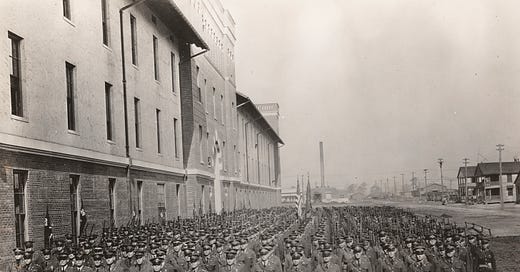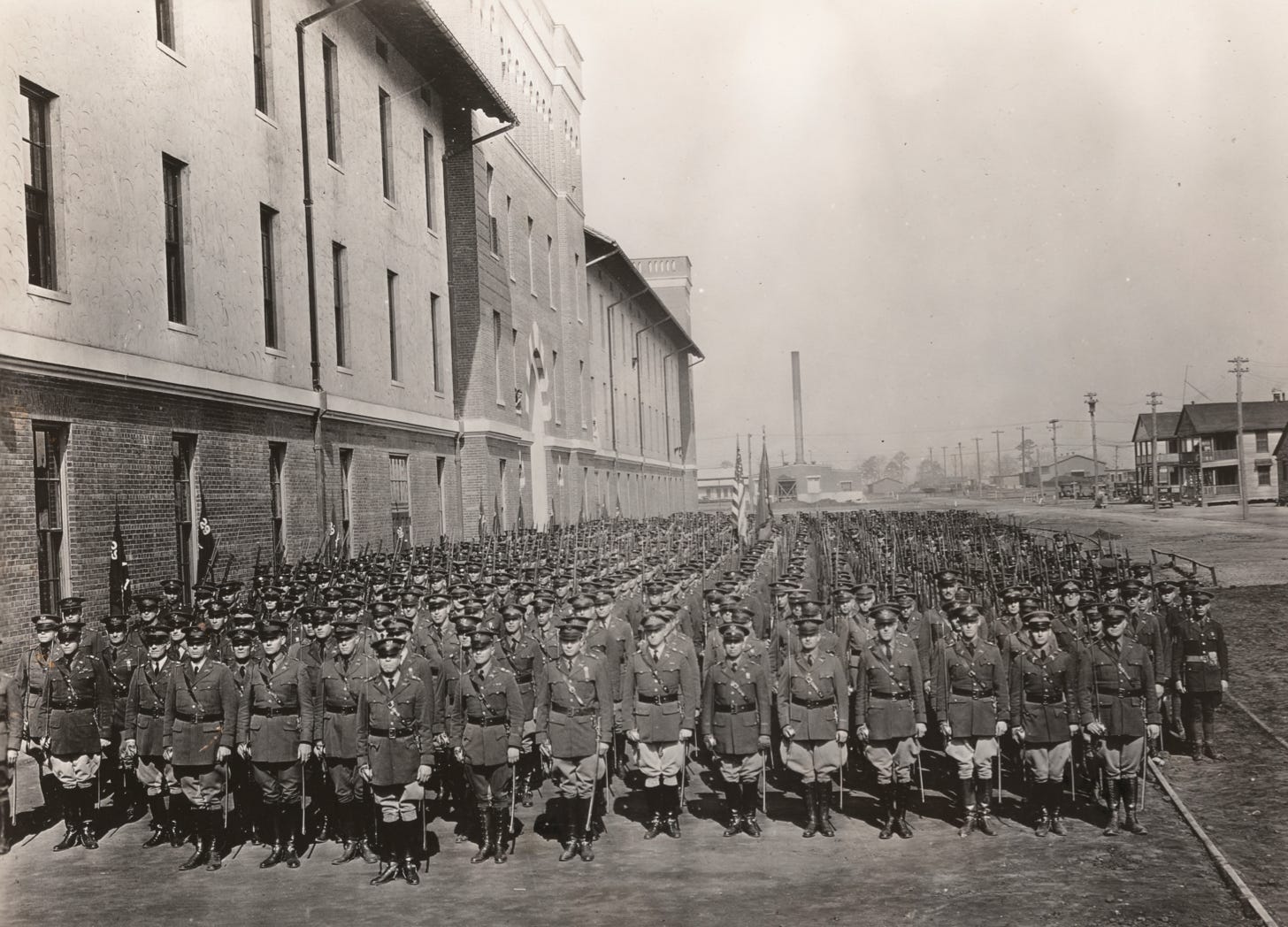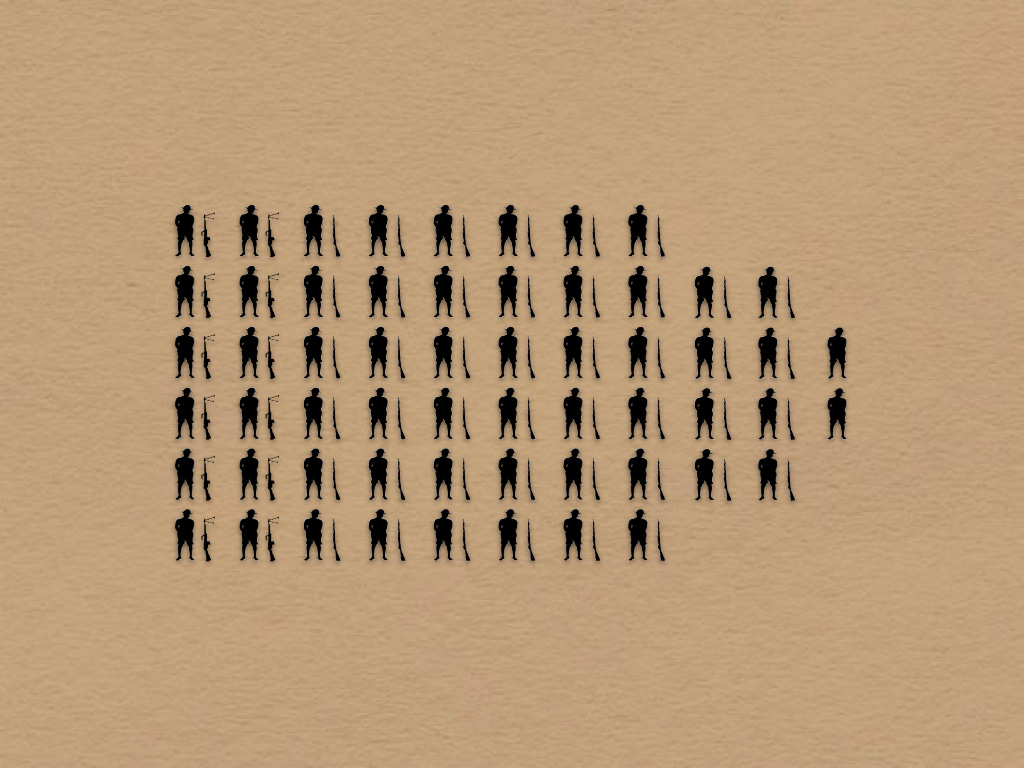The estate of the late John Sayen has graciously given the Tactical Notebook permission to serialize his study of the organizational evolution of American infantry battalions. The author’s preface and the previous section of this book may be found via the following links:
In 1928, the 29th Infantry Regiment, the “school troops” unit of the Infantry School at Fort Benning, Georgia, began a series of experiments, each of which looked at new ways to organize the building blocks of infantry units. The first of these tested a howitzer company armed with two new weapons, the M1 37mm gun and M1 75mm mortar, the others looked at different kinds of rifle companies, machine gun companies, and infantry battalions.
With 197 men, the experimental howitzer company had nearly twice the manpower as the 107-man company called for by existing tables of organization. Nonetheless, it did not employ twice as many weapons. Rather, where the existing howitzer company served three M1916 37mm guns and three 3-inch mortars, the experimental unit was equipped with three of the new 37mm guns and six of the new mortars.
Of the 90 men added to the experimental howitzer company, 27 operated the three additional mortars. Of the rest, 15 were added to the crews of existing weapons and 6 joined the three ammunition squads. To put things another way, many of the new men in the experimental howitzer company were chiefly concerned with the carrying of ammunition. Indeed, thanks to these men, the experimental howitzer company could carry twice as many rounds for each 37mm gun (288 versus 144) and half-again as many bombs for each mortar (108 versus 72) as a standard howitzer company.[1]
The experiments with the rifle company, which began in the summer of 1929, compared three different ways to distribute automatic rifles within a four-platoon company. In one experimental company, all 24 Browning Automatic Rifles (BARs) were placed in a single platoon. (Like the other rifle platoons in these experiments, this platoon consisted of 6 eight-man squads. Thus, every second private in each squad carried a BAR.)
In another company, BARs were distributed at a rate of one for each of 24 squads. In the third experimental company, the number of BARs was doubled. Thus, each squad got 2, each section got 6, and each platoon got 12 such weapons.[2] (It is worth noting that none of these structures call for any sort of subdivision of the squad.)
Editor’s Note: The format of the many appendices to this work fit poorly with Substack. For that reason, I have placed them on a PDF file that can be found at Military Learning Library, a website that I maintain.
[1] “Notes from the Chief of Infantry - Experimental Howitzer Company” Infantry Journal April 1929 p. 414-15.
[2] “Notes From the Chief of Infantry - Reorganization of the Infantry Battalion” Infantry Journal September 1929 pp. 315-316; “Notes From the Chief of Infantry - Reorganization of the Infantry Battalion” Infantry Journal November 1929 pp. 516-518; ”Notes From the Chief of Infantry - Reorganization of the Infantry Battalion” Infantry Journal January 1930 pp. 70-71; and “Notes From the Chief of Infantry - Reorganization of the Infantry in the Division” Infantry Journal March 1930 pp. 293-295.







